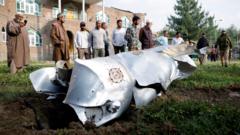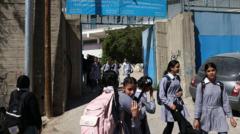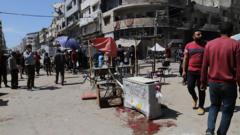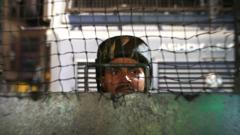Amidst ongoing conflict, Gaza's Ministry of Health maintains that over 51,200 Palestinians have died since the outbreak of war, countering accusations of manipulated figures. The ministry explains its methodology for compiling casualty data, as figures continue to be scrutinized by both Israeli authorities and international observers.
Gaza Health Ministry Defends Death Toll Figures Amid Controversy
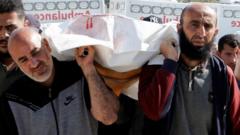
Gaza Health Ministry Defends Death Toll Figures Amid Controversy
The Hamas-run health ministry in Gaza asserts the accuracy of its reported death toll, while critics raise concerns over potential manipulations and lack of transparency.
The Hamas-run Ministry of Health in Gaza has reported that more than 51,200 Palestinians have lost their lives since the beginning of the recent war, yet it stands firm against accusations of inflating these numbers for propaganda purposes. Various media outlets and Israeli officials have challenged the reliability of these figures, claiming discrepancies in demographics and overall fatalities.
At al-Shifa Hospital in Gaza City, a poignant scene unfolds as Alam Hirzallah processes the heartbreaking task of registering the deaths of family members due to an Israeli airstrike. This personal loss, echoed by many families across Gaza, highlights the human toll of the ongoing conflict, with a significant percentage of the deceased being children.
Health officials, including Zaher al-Wahidi, defend their data collection process, stating that the casualty figures derive from hospitals and recent revisions. They assert that discrepancies exist not due to manipulation but through a verification process aimed at maintaining data credibility. The officials clarify that some deaths may have initially been reported incorrectly, often due to unclear identification by bereaved families amidst chaos.
The complexities surrounding casualties were deepened by lingering doubts over the extent of Israeli military actions, including accusations of targeting medical facilities. As conditions have worsened, the Ministry revamped its reporting system, introducing online forms for relatives to report deaths. This shift has resulted in the removal of more than 3,000 names from casualty lists as part of a judicial review.
Observers like Professor Mike Spagat of Royal Holloway College acknowledge the Ministry's concerted effort to refine casualty records. He perceives ongoing updates to the lists as a "clean-up operation," countering the narrative that manipulations are occurring.
The issue of unrecovered bodies adds another layer to the crisis; many remain entombed under rubble while identification processes are hindered by the lack of DNA testing in Gaza. Recent ceasefires have allowed for some recovery and registration of bodies that were long buried.
As the conflict escalates again, with rising daily casualty counts, the debate over accurate reporting shows no signs of abating, leaving a profound impact on the communities embroiled in this enduring conflict. The humanitarian situation continues to deteriorate, raising urgent concerns amid an absence of a peaceful resolution. International journalists remain barred from independent access to Gaza, further complicating efforts to verify the narratives put forth by both conflicting parties.


